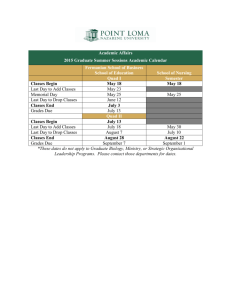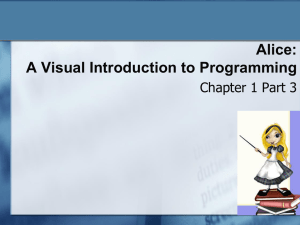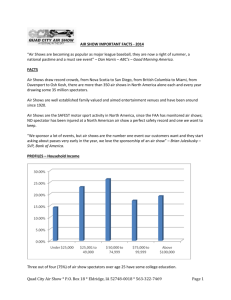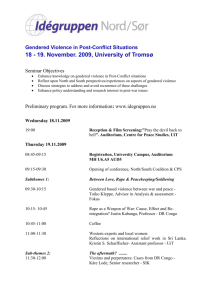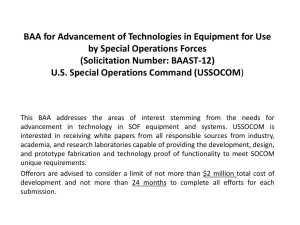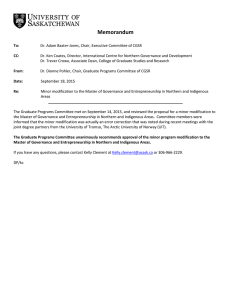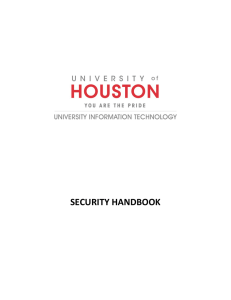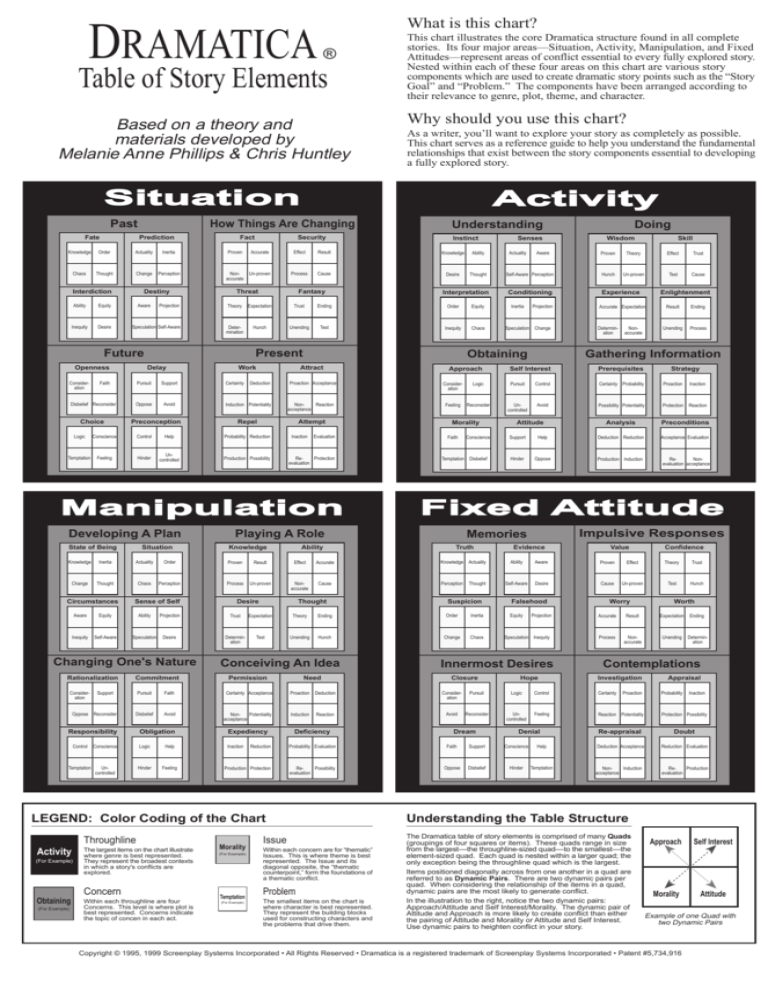
What is this chart?
DRAMATICA
®
Table of Story Elements
Based on a theory and
materials developed by
Melanie Anne Phillips & Chris Huntley
This chart illustrates the core Dramatica structure found in all complete
stories. Its four major areas––Situation, Activity, Manipulation, and Fixed
Attitudes––represent areas of conflict essential to every fully explored story.
Nested within each of these four areas on this chart are various story
components which are used to create dramatic story points such as the “Story
Goal” and “Problem.” The components have been arranged according to
their relevance to genre, plot, theme, and character.
Why should you use this chart?
As a writer, you’ll want to explore your story as completely as possible.
This chart serves as a reference guide to help you understand the fundamental
relationships that exist between the story components essential to developing
a fully explored story.
Situation
Past
Fate
How Things Are Changing
Prediction
Knowledge
Order
Actuality
Inertia
Chaos
Thought
Change
Perception
Interdiction
Ability
Equity
Inequity
Desire
Destiny
Aware
Fact
Proven
Effect
Result
Knowledge
Ability
Process
Cause
Desire
Thought
Threat
Fantasy
Trust
Ending
Order
Equity
Speculation Self-Aware
Determination
Hunch
Unending
Test
Inequity
Chaos
Present
Delay
Pursuit
Support
Oppose
Avoid
Preconception
Work
Certainty
Deduction
Proaction Acceptance
Induction Potentiality
NonReaction
acceptance
Repel
Attempt
Control
Help
Probability Reduction
Temptation
Feeling
Hinder
Uncontrolled
Production Possibility
Inaction
Evaluation
ReProtection
evaluation
Manipulation
Developing A Plan
State of Being
Situation
Ability
Knowledge
Inertia
Actuality
Order
Proven
Result
Effect
Accurate
Change
Thought
Chaos
Perception
Process
Un-proven
Nonaccurate
Cause
Sense of Self
Desire
Thought
Faith
Conscience
Temptation Disbelief
Truth
Knowledge Actuality
Perception
Thought
Chaos
Control Conscience
Temptation
Uncontrolled
Obligation
Expediency
Logic
Help
Inaction
Hinder
Feeling
Deficiency
Activity
(For Example)
The largest items on the chart illustrate
where genre is best represented.
They represent the broadest contexts
in which a story's conflicts are
explored.
Concern
Within each throughline are four
Concerns. This level is where plot is
best represented. Concerns indicate
the topic of concen in each act.
Hinder
Oppose
Production Induction
ReNonevaluation acceptance
Impulsive Responses
Evidence
Proven
Effect
Theory
Trust
Self-Aware
Desire
Cause
Un-proven
Test
Hunch
Projection
Speculation Inequity
Hope
Result
Expectation
Ending
Process
Nonaccurate
Unending
Determination
Contemplations
Investigation
Appraisal
Control
Certainty
Avoid
Reconsider
Uncontrolled
Feeling
Reaction Potentiality
Protection Possibility
Re-appraisal
Doubt
Deduction Acceptance
Reduction Evaluation
NonInduction
acceptance
ReProduction
evaluation
Dream
Denial
Oppose
Disbelief
Hinder
Temptation
The smallest items on the chart is
where character is best represented.
They represent the building blocks
used for constructing characters and
the problems that drive them.
Accurate
Logic
RePossibility
evaluation
Problem
Worth
Pursuit
Production Protection
(For Example)
Worry
Consideration
Help
Temptation
Confidence
Aware
Innermost Desires
Closure
Value
Ability
Conscience
Within each concern are for “thematic”
Issues. This is where theme is best
represented. The Issue and its
diagonal opposite, the “thematic
counterpoint,” form the foundations of
a thematic conflict.
Inaction
Acceptance Evaluation
Support
(For Example)
Strategy
Deduction Reduction
Faith
Issue
Process
Help
Probability Evaluation
Morality
Unending
Support
Reduction
LEGEND: Color Coding of the Chart
Throughline
Attitude
Equity
Change
Responsibility
Prerequisites
Falsehood
Hunch
Reaction
Self Interest
Suspicion
Unending
Induction
Nonaccurate
Ending
Gathering Information
Memories
Test
NonPotentiality
acceptance
Determination
Result
Fixed Attitude
Determination
Avoid
Accurate Expectation
Preconditions
Desire
Disbelief
Enlightenment
Analysis
Morality
Speculation
Oppose Reconsider
Experience
Protection Reaction
Self-Aware
Proaction Deduction
Cause
Possibility Potentiality
Inequity
Need
Test
Avoid
Inertia
Permission
Un-proven
Uncontrolled
Order
Conceiving An Idea
Hunch
Reconsider
Ending
Certainty Acceptance
Speculation Change
Trust
Feeling
Theory
Faith
Projection
Effect
Proaction
Expectation
Pursuit
Inertia
Theory
Certainty Probability
Trust
Support
Conditioning
Proven
Control
Projection
Consideration
Self-Aware Perception
Skill
Pursuit
Ability
Commitment
Aware
Wisdom
Logic
Equity
Rationalization
Actuality
Doing
Consideration
Aware
Changing One's Nature
(For Example)
Approach
Playing A Role
Knowledge
Senses
Obtaining
Attract
Conscience
Obtaining
Interpretation
Expectation
Logic
Circumstances
Instinct
Theory
Faith
Choice
Accurate
Understanding
Projection
Openness
Disbelief Reconsider
Security
NonUn-proven
accurate
Future
Consideration
Activity
Proaction
Probability
Inaction
Understanding the Table Structure
The Dramatica table of story elements is comprised of many Quads
(groupings of four squares or items). These quads range in size
from the largest––the throughline-sized quad––to the smallest––the
element-sized quad. Each quad is nested within a larger quad; the
only exception being the throughline quad which is the largest.
Items positioned diagonally across from one another in a quad are
referred to as Dynamic Pairs. There are two dynamic pairs per
quad. When considering the relationship of the items in a quad,
dynamic pairs are the most likely to generate conflict.
In the illustration to the right, notice the two dynamic pairs:
Approach/Attitude and Self Interest/Morality. The dynamic pair of
Attitude and Approach is more likely to create conflict than either
the pairing of Attitude and Morality or Attitude and Self Interest.
Use dynamic pairs to heighten conflict in your story.
Approach
Self Interest
Morality
Attitude
Example of one Quad with
two Dynamic Pairs
Copyright © 1995, 1999 Screenplay Systems Incorporated • All Rights Reserved • Dramatica is a registered trademark of Screenplay Systems Incorporated • Patent #5,734,916
n
o
i
t
itua
S
U niv
1C
Pa s
la s
s
e r se
Pr
y
t
i
v
i
Act
4T
ss
o g re
ype
U nd
t
se n
er
Fa c t
ic
Pr e d
Fa t e
at
T hr e
t iny
De s
O
e ss
p e nn
R
en
Prov
Know
e
le dg
a lity
Ac tu
er
O rd
ng e
C ha
g ht
T hou
os
C ha
Perc
Self-A
c ula
Spe ti on
re
De si
Fa it h
ra s id e
C on ti on
elie
Disb
ry
Supp
ort
Av o
t io n
id
ab
Prob
ilit y
Prod
t
e
le dg
wa
Self-A
g ht
T hou
er
Hind
Perc
re
O
io n
ia
Inert
d
e
x
i
F
la s
s
4T
ype
Sit ua
t io n
w
Ab ilit
f
se o
Se n Se lf
o
P re c
a lity
Ac tu
Perc
os
C ha
Abili
re
uit y
Ineq
wa
Self-A
ra s id e
C on ti on
n
c t io n
Proje
c ula
Spe ti on
re
o se
Op p
Re -id era s
C on ti on
elie
Disb
Av o
f
ainty
ry
e
Va lu
tio
ns
e
Ev id
h
T r ut
ic io
Susp
cy
ic ie n
Fa
p tAc caenc e
id
nt
Pot e
ia lity
t io n
Inac
He lp
Un-rolle d
t
C on
er
Hind
g
Fe elin
Prod
E le
n
uc ti o
t io n
c t io n
Indu
n
uc t io
Re d
ry
W or
ood
lse h
la s
c c eep
Non-A
-t anc
s
ype
s
H
ct
Re a
ab
Prob
n
ec t io
Prot
ilit y
io n
E
Abili
Know
le dg
e
n
e pt io
Perc
a ti on
v a lu
bili ty
Pos si
Re - a ti on
lu
Ev a
en
Prov
a lity
Ac tu
O rd
re
De si
wa re
Self-A
g ht
T hou
se
C au
ty
bt
Do u
64
h
Hunc
c ula
Spe ti on
er
os
C ha
ng e
C ha
ra s id e
C on ti on
Av o
Re -id era s
C on ti on
C
Un- lle d
ont ro
ort
Supp
Fa it h
f
io n
He lp
pt aT emti on
t io n
ia lity
Prot
p tAc caenc e
n
ec t io
Pos si
n
uc t io
Re d
c t io n
Indu
Non- p tAc caenc e
me
t io n
Inac
y
ab ilit
Prob
nt
Pot e
uc
De d
er
Hind
armin
De te ti on
g
ndin
Un-E
c ti on
Proa
ct
Re a
C on nc e
sc ie
elie
Disb
o se
Op p
ainty
C ert
g
Fe elin
uit
Purs
id
e ss
t rol
C on
Lo gic
Non-rat e
Ac c u
E le
g
Endin
c ta Ex peti on
lt
Re su
Proc
uit y
Ineq
-
T es t
n
rov e
Un-P
rat e
Ac c u
c t io n
Proje
y
Equit
ia
Inert
ns
m
ct
Eff e
re
Awa
tio
Rer-a isa l
Ap p
ia l
De n
ry
T heo
me
nts
ria
l
r a isa
Ap p
st iInv ea t io n
g
ope
Va
th
T rust
uc
De d
c ti on
Proa
W or
nc e
n
16
nf i- e
C oe
d nc
ur e
C lo s
h
Hunc
g
ndin
Un-E
c c eep
Non-A
-t anc
Lo gic
C on nc e
sc ie
pt aT emti on
64
g
Endin
T heo
T es t
Fa it h
ort
t rol
C on
Non-rat e
Ac c u
C ert
uit
Purs
Supp
e
se
C au
armin
De te ti on
re
De si
-
ria
De f
cy
d ie n
rat e
Ac c u
c ta Ex peti on
T rust
ty
y
Equit
Awa
e pt io
e ss
Proc
on
lua ti
us
sc io
C on
Dr e a
n
rov e
Un-P
er
4T
o us
nsc i
io n
Re - a ti on
lu
Ev a
1C
o ry
Mem
d
Ne e
Ex p
n
g a t io
O b li
Va
ug ht
n
issio
Pe r m
mittC om
me n
en
Prov
O rd
16
ir e
De s
lt
Re su
ng e
C ha
er
Hind
f
nts
Ev a
p tAc caenc e
e
d
u
t
i
Att
s
ing
y
T ho
ct
Eff e
g ht
T hou
elie
Disb
ct
Re a
c t io n
Indu
n
uc ti o
me
us
sc io
n
o
c
S ub
e
le d g
ip o ns
Re s b ilit y
e
C on nc e
sc ie
Prod
c e iv
na lRa tizioa t io n
le dg
He lp
o se
Op p
n
ec t io
n
uc t io
Re d
n
uc t io
De d
ort
Supp
Prot
y
nt ia lit
Pot e
ns
t io n
Inac
M ind
ing
ua liz
umC irtca nc e s
s
Know
onRe ce rat io n
si d
e ss
c ti on
Proa
y
ab ilit
bili ty
id
Un-rolle d
t
C on
pt aT emti on
1C
Pos si
Av o
Lo gic
ra s id e
C on ti on
g
o min
Be c
ia
Inert
t rol
C on
uit
Purs
uit y
Ineq
Prob
ainty
C ert
Proc
g
ndin
Un-E
Non-rat e
Ac c u
armin
De te ti on
E le
g
Endin
lt
Re su
c ta Ex peti on
te
c c ura
ng e
C ha
c ula
Spe ti on
os
C ha
A
c t io n
Proje
Fa it h
C on
f
te og
St aB
e in
h
Hunc
n
e pt io
g
Fe elin
y
g
o
l
c ho
Kno
64
se
C au
T es t
tio
Pr ed-it io ns
C on
ly sis
Ana
ud e
n
rov e
Un-P
re
y
Equit
rd er
Un-rolle d
t
C on
g
B e in
ce p
C on
bili ty
Know
re
De si
Re - a ti on
lu
Ev a
Awa
a lity
Ac tu
ty
Abili
ti on
ec t
Prot
en
Prov
io n
lua
Ev a
t io n
Inac
n
o
i
t
a
ipul
Psy
me
nts
ct
Re a
Pos si
n
uc ti o
At t it
ty
o r a li
ry
T heo
g
Fe elin
pt aT emti on
Man
r
Se lfr e st
Int e
oach
S
ria
gy
tr ate
Pr eu-isit e s
Re q
ct
Eff e
Non- p tAc caenc e
n
uc t io
Re d
He lp
t rol
C on
p tAc caenc e
c ti on
Proa
y
nt ia lit
Pot e
c t io n
Indu
C on nc e
sc ie
Lo gic
uc
De d
ainty
C ert
E le
T es t
g
ndin
Un-E
h
Hunc
o se
Op p
Re -id era s
C on ti on
f
pr eInt etra t io n
mp t
e r iEx p
e nc e
nd it io
C o n ing
Va
ht e n
Enligme nt
T rust
g
Endin
T rust
c ta Ex peti on
armin
De te ti on
wa re
uit
Purs
uit y
Ineq
ct
Inst in
Ap p
64
se
C au
e ss
Proc
n
rov e
Un-P
T heo
c t io n
Proje
re
Awa
y
Equit
ty
Abili
ct
Eff e
te
c c ura
Non-rat e
Ac c u
n
e pt io
ns
se s
Se n
M
lt
Re su
ia
Inert
tio
At t e
l
epe
16
om
W isd
Pr ee-p t io n
c o nc
ic e
C ho
A
ria
k
y
g
a inin
Sk ill
ct
At t r a
W or
De la
Va
a sy
Fa nt
t io n
Int e rt io n
d ic
16
s
g
rnin
Le a
O bt
ur it y
ype
d ing
st a n
re
F utu
Se c
4T
g
D o in
s
la s
s
s
c
i
s
Phy
t
P re
1C
nts
bili ty
Ev a
on
lua ti
Re - a ti on
lu
Ev a
Prod
n
uc ti o

